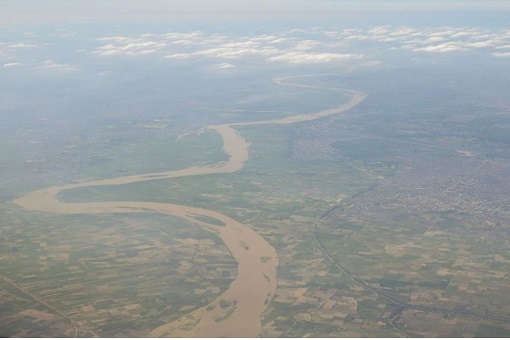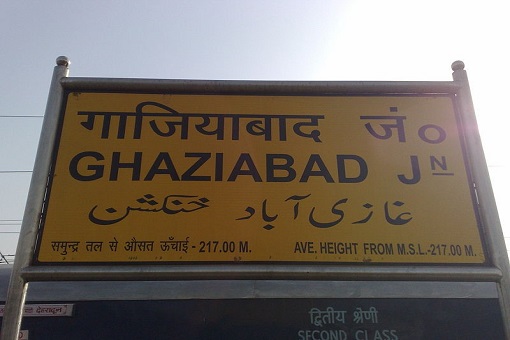
Aerial view of Hindon river

Ghaziabad Railway station
Hindon River is notably called the lifeline of Ghaziabad. Though notorious as a shrunken and polluted tributary of the Yamuna that is entirely rainfed, its large catchment area has had a huge civilizational significance in the development of Western Uttar Pradesh. It is on the banks of this river that many of us found traces of the Harappan civilization with archeological sites dating back to as long as 2500 BC. Also, many of the populous cities of the state have grown and prospered, which includes, Saharanpur, Baghpat, Muzzafarnagar, Ghaziabad, Noida, etc.
Despite its almost reduced importance as a source of drinking water or agriculture in its catchment zone, the river has had a lot of salience in the region’s history. At the time of India’s first war for Independence in 1857, the river was the focal point of many skirmishes that took place between the revolting sepoys and the British Indian army. After the revolt erupted in the garrison town of Meerut on 10 May 1857, the soldiers marched toward Delhi to promulgate Mughal emperor, Bahadur Shah Zafar as the sovereign. In the process, marching soldiers constructed a pontoon bridge over the river to crossover and defeat the British army. This siege of Hindon and later on Shahdara along the Yamuna marked the toppling down of the British Raj temporarily.
Also notable is the Battle of Badli Ki Serai, which took place on the banks of the river, where the British forces combined with Gurkha soldiers defeated the rebels and captured the region. Almost 51 British soldiers were killed in the battle, while the causalities were more than 1000 on the Indian side. The graves of many soldiers, as well as British officers, can still be observed near the banks of the river and demonstrate how the city has embodied the transition in Indian history. Numerous folklores have been amalgamated into the culture of surrounding regions giving details of the heroics of Indian soldiers and the battle that ensued along the banks of the river.
Once the war got over, the river also saw the hangings of many of its great heroes like Umrao Singh, King Gulab Singh, and Maharaj Singh who fought valiantly on the side of the revolting soldiers. In the Gandhian era, the Ghaziabad railway station on the banks of the river was an important site for addressing thousands of freedom fighters by leaders. During the individual Satyagraha preceding the Quit India movement, many of the brave hearts offered arrest as a token of protest against British policies. Despite its obscurity in the rapidly growing infrastructural boom, the river reminds us of the glory of countless martyrs and historical events that it has contained in itself. It is also a stark reminder that we need to prevent growing encroachments along the riverbank that also destroy the history impregnated by the river.
Source: Krishan Kumar Singh and Apala Mishra, Officer Trainees, 96th Foundation Course, 2022, LBSNAA, Mussoorie